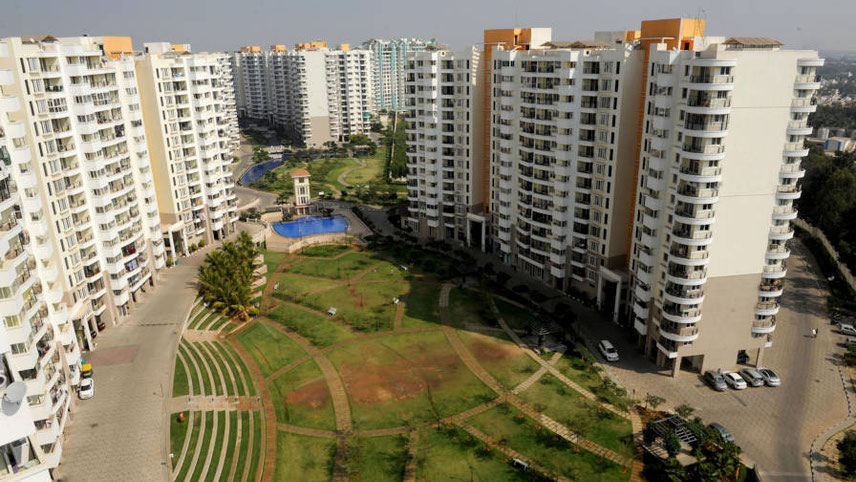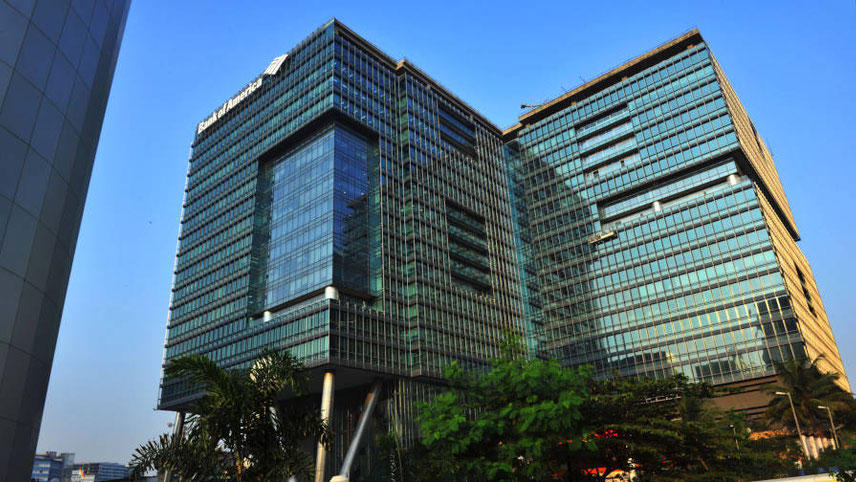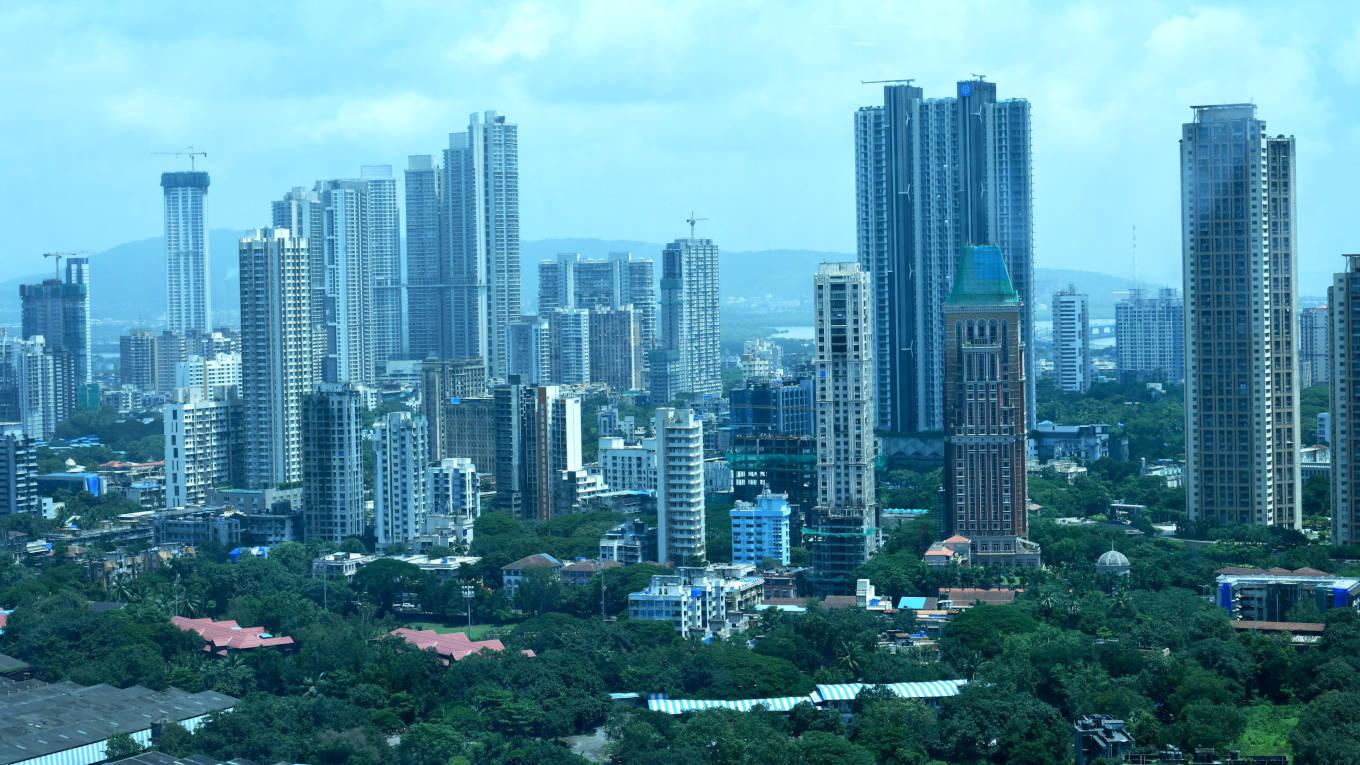-

Year 2024 promises to be a standout year for the office market
Office completions dropped by 13 per cent y-o-y to 42.9 million sq ft in 2023, as developers were largely focused on residential projects owing to the relatively steeper increase in sales volume and prices. However, Kolkata saw a significant increase of 332 per cent y-o-y in office space completion, followed by Mumbai and Chennai at 52 per cent and 49 per cent, respectively. Also, Bengaluru and Chennai witnessed the highest new office supplies of 13.4 million sq ft and 6.6 million sq ft, respectively, says the Knight Frank report.
Rents have firmed up across all markets over the course of the year. This is the third half-yearly period when rents have either grown or remained stable across all markets. Despite not having had its best year in terms of transaction volumes, rent growth has been strong in Bengaluru at 7 per cent on account of limited supply for Grade A space. Among the other large markets, rents in Mumbai, NCR and Chennai have grown at 4 per cent, 2 per cent and 6 per cent, respectively.
“The impetus behind India’s recent dominance in office absorption is attributed to its strong economic fundamentals. The forthcoming year is poised for steady expansion, and 2024 promises to be a standout year for the office market, driven by India-facing businesses and Global Capability Centres (GCC). India will continue to play up on its natural advantages which include excellent real estate, highly competitive rents, very strong talent pool and a consistently growing economy, making it a robust end-user market. These factors will catalyse for advancing further demand for office space. The surge in flexible workspaces will play a pivotal role in fostering growth-oriented businesses in India. With these factors in play, we anticipate the office market to reach new peaks in 2024,” says Baijal.
Growth of GCC sector
GCCs recorded an increase of 58 per cent in transaction volumes, from 13.2 million sq ft in 2022 to 20.8 million sq ft in 2023. Chennai witnessed the highest GCC focussed transactions at 6 million sq ft, followed by Hyderabad at 4.1 million sq ft. The increasing confidence in the country’s economic stability has substantially increased corporate investments in setting up GCCs in India and this is reflected in the growing share of GCCs in the total transacted area. Their share has grown substantially from 25 per cent in 2022 to 35 per cent in 2023. This makes the GCC category as the only one to grow in terms of market share among the four end-use categories, as per the Knight Frank report.
India’s office absorption has undergone a shift in characteristics, transitioning from being predominantly led by third-party IT services to being increasingly favoured by GCC in recent years. The primary catalyst for this transformation lies in the evolving attitude of global corporations, which now lean towards owning their resources while expressing a favorable inclination towards India for establishing such setups. India boasts exceptional quality in real estate, competitive rental rates, an extraordinary talent pool, and a consistently growing economy, making it a robust end-user market for numerous companies.
-

Data centres, life sciences and shared spaces will witness increased traction in 2024
Though GCC recorded a significant mark-up in its share, India-facing business continued to anchor the office market with 21.9 million sq ft of office market transactions in 2023. Mumbai led the annual office transactions of India-facing business at 5.8 million sq ft, closely followed by National Capital Region at 5.5 million sq ft.
The need for flexibility of tenure is not as intensely felt today, compared to a year ago when flex spaces accounted for 19 per cent of the total transacted volumes relative to the 17 per cent in 2023. End use categories of flex and third-party transacted volumes of 10.4 million sq ft and 6.5 million sq ft in 2023, says the Knight Frank report.
“In 2023, the global economy, while grappling with monetary tightening and geopolitical challenges, fared better than expected,” argues Anshuman Magazine, chairman & CEO, India, South-East Asia, the Middle East & Africa, CBRE. “Most major economies managed to avoid a recession, while the Indian economy continued demonstrating resilience in the year gone by.” The Indian economy is anticipated to exhibit similar resilience in 2024 as well, led by strong domestic growth and sustained capital expenditure.
The office sector also performed better than expected, with many occupiers finalising deals in the latter half of the year. Driven by steady momentum in enquiries, this demand is likely to remain largely stable during H1 2024. However, “we expect demand to pick up momentum during H2 2024, led by clearer visibility of the global macroeconomic situation and an uptick in the global information technology (IT) services sector,” contends Magazine.
Alternate asset classes will gain
“However, 2024 is likely to be a year of redemption where real estate will reshape, restructure and realign on a stronger domestic footing. Although office assets will continue to constitute the bulk of investment inflows in 2024, alternate asset classes like data centres, life sciences and shared spaces will witness increased traction. Additionally, all throughout 2024 and beyond, sustainable elements and digital touchpoints will percolate across all real estate verticals,” affirms Badal Yagnik, CEO, Colliers India.
“Although the momentum in residential real estate is likely to continue into 2024, we might witness the base effect coming into play and thus growth in sales, launches and prices will remain moderate. With adequate inventory and uptick in ready to occupy property supply, the residential market is likely to be evenly balanced between homebuyers and developers. Developers with a track record of timely execution of projects will continue to see good traction in the market,” Yagnik adds.
According to Niranjan Hiranandani, chairman, NAREDCO National, “Real estate in India has grown steadily over the last few years, driven by factors such as rapid urbanisation, infrastructure improvements, favourable demographics, and government policies geared towards growth. With economic growth projected at 7 per cent, India has a solid foundation for the upcoming fiscal year. A dynamic market shift and buoyant consumer demand characterise the current Indian real estate market.
Several compelling factors combine to make the Indian real estate sector a standout. These factors include rapid urbanisation, political stability, infrastructure development, buoyant capital markets, institutional investment, favorable demographics and rising incomes. A comprehensive landscape of growth, resilience and innovation in the Indian real estate sector generates an overall sense of optimism for 2024-25.
-
A comprehensive landscape of growth, resilience and innovation in the Indian real estate sector generates an overall sense of optimism for 2024-25
“The new year is well-poised to take the sector forward,” informs Ankita Sood, head, research, Housing.com, PropTiger.com & Makaan.com. “We expect good momentum in both property buying and renting, as our IRIS index, which tracks upcoming demand, estimates northbound movement. Property prices have surged 15-20 per cent from pre-Covid levels and monthly rents have seen a spike of 25-50 per cent in key areas of cities, driven by the service industry. We feel the growth for 2024 will not just be limited to the metros, but be driven by the Tier II cities as newfound economic and realty epicentres.”
“Looking ahead, the dynamic landscape promises diverse opportunities beyond conventional realms. The year holds potential for those exploring emerging locations, innovative projects, and untapped geographical landscapes within the real estate sector. In this transformative journey, the Indian real estate sector stands as a beacon of progress, reflecting the nation’s resilience. As we are into the new year, may aspirational, luxurious living and premium lifestyles become a tangible reality for an even greater number of aspiring homebuyer,” hopes Venkatesh Gopalakrishnan, MD & CEO, Shapoorji Pallonji Real Estate.
“Closing the chapter on 2023, the Indian residential real estate sector showcased strong performance despite rising interest rates and prices. Residential demand continued to be driven by end-users. Premiumisation was also a theme this year, with homebuyers seeking spacious homes. As we step into 2024, the real estate sector in India is poised to continue the journey towards innovation, adaptability, and growth. Projections indicate that this trend will persist into 2024, given potential factors such as an interest rate cut, stable property prices, salary hikes, and improved job opportunities – all seen as catalysts for sustaining demand,” views Amit Kumar Sinha, MD & CEO, Mahindra Lifespace Developers.




































